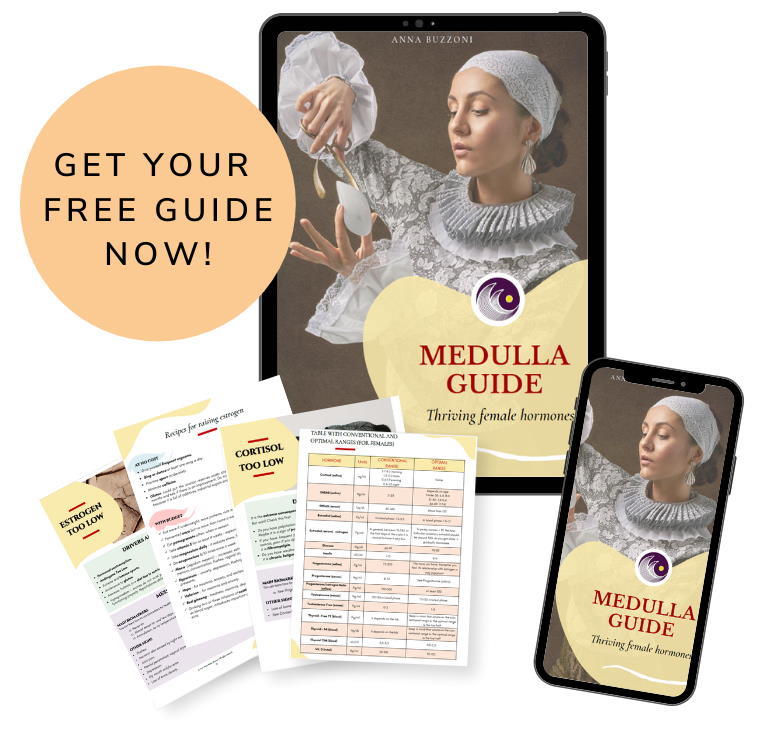Endometriosis is not very well understood
March is the month dedicated to raising awareness on endometriosis, a female pathology that affects about 10% of Western women of reproductive age.
It is still a little known disease, and scientific research is not particularly advanced nor does it agree on causes and therapies. On February 14, 2017, the European Union approved a resolution on the promotion of gender equality in mental health and clinical research: this resolution also considers endometriosis and mentions its study and treatment as an example of discriminatory treatment in research on female pathologies.

Image by Medulla
Endometriosis is the proliferation of endometrial cells (the internal lining the uterine cavity) outside the uterus, normally in the pelvis, ovaries, fallopian tubes, vagina, rectum, etc. – but also in other parts of the body, such as the nasal cavity. These “misplaced” cells are called endometrial lesions.

Image from Wikipedia
Endometrial cells are sensitive to monthly hormonal fluctuations that characterize the female cycle, and this pathology causes excruciating pains especially during the phase immediately preceding ovulation and menstruation. Just before ovulation, there is a spike in estrogen, the hormone that causes cells – including endometrial cells – to proliferate – and therefore swell; when the woman starts menstruating, lesions also start to bleed.
If you know a woman who tells you how bad her period pain is, do not dismiss her, but ask her if she has heard of endometriosis. More than 50% of those affected are not aware they have this condition.
Symptoms of endometriosis
Symptoms vary but may include: very intense cramps, vomiting, fainting, abundant and painful menstruation, infertility, pain during penetration, pain during bowel movements, etc. It is important to underline that endometriosis does not cause infertility by itself, but it is certainly an important concurrent cause. I cannot stress it enough: menstrual pain is not normal, but too often doctors and society treat it as if it was a given, or a sign of weakness.
Some women with extensive endometriosis do not present any disorder; they are often women with less advanced stages of the disease who have the most acute symptoms.
The only way to diagnose endometriosis with certainty is through a laparoscopy (through the insertion of an optical fiber through the navel). But doctors often do not see it because they were educated to look only for dark colored lesions. Lesions have actually different colors, and can be so light that they are not visible without suitable equipment.
Causes of endometriosis: not driven by hormones but inflammation
One of the most accredited theories is that it is a congenital disease present since birth. Some endometrial cells of the embryo are misplaced, to put it simply. However, all women can potentially develop the disease, if external environmental circumstances favor it (I will come back to it).
In recent years, scientific research seems to have found that endometriosis is not a hormonal disease, but rather an autoimmune disease or a disease driven by inflammation. This classification does not deny but completes the genetic theory. What does autoimmune disease mean? A woman with genetic endometriosis may never develop symptoms because her immune system remains quiet and does not react to the presence of endometrial lesions. In cases of symptomatic endometriosis, the immune system reacts aggressively and begins to attack these cells, causing inflammation, which in turn causes painful symptoms.
The immune system reacts through the production of cytokines and Prostaglandins that inflame the body and endometrial lesions, causing their growth (all that is inflamed is swollen, right?). The cytokines are molecules secreted by cells in response to a stimulus, and they act as mediators in the communication of our immune system. Prostaglandins are fatty acids produced by the body and are influenced by the food we eat. They can be positive or negative. Autoimmune diseases can be caused or aggravated by inflammation, and indeed endometriosis may be an inflammatory disease.
Therapy and care against inflammation
In the past, the only recommended therapy was hormone therapy (Pill&Co. for short). This therapy does not cure the disease, but simply “turns off” the system, giving relief to the symptoms, and postpones the problem. Many doctors recommend complete surgical removal of the uterus and ovaries; this solution is drastic and dramatic, and should only be performed in exceptional and very rare cases, according to Dr. Christiane Northrup, gynaecologist and holistic midwife.
Through diet we can have a fundamental impact on the state of health of our immune system, as well as through an appropriate routine that takes into account the most current scientific discoveries in terms of stress and energy fields.
Diet
The diet for endometriosis aims to restore and strengthen the immune system, balance hormones and harmful prostaglandins, and reduce estrogen in the body.
1) Avoid dairy products that contain A1 casein
This is a very inflammatory protein for many women (not all women). Dairy cow milk products contain A1 casein, while goat and sheep are fine.
2) Integrate in your daily routine foods that protect the immune system
- Beans, peas and lentils – remember to rinse them to remove the saponin, and to soak them, even the flours, for the indicated time.
- Carrots
- Green tea and Roiboos
- Leek
- Goat’s milk, not industrial or with live milk enzymes
- Onions
- Rhubarb
- Oil seeds
- Probiotics such as Kefir, sauerkraut, topinambour, goat yoghurt, etc.
- Garlic
- Ginger
- Turmeric (curcuma). A 2012 study has demonstrated the healing and anti-inflammatory capacity of this spice on endometrial lesions. Regular consumption may not be sufficient, but it can be taken as a supplement because it has no particular contraindications even in the long term (ask your specialist).
-

Photo by JACKELIN SLACK on Unsplash
Aromatic herbs, especially oregano and thyme.
3) Gluten can trigger autoimmune reactions in some people.
There are tests to determine if gluten antibodies are present in your blood. You can try to suspend gluten for at least six months (entirely) to notice the difference. Please make sure you do eat wholegrains that do not contain gluten, they are important. Gluten is not only in breads and pasta, but also in beer, sausages, etc. Be aware that most industrial gluten-free food is packed with shit (sugar, vegetable oils) that will inflame your endometriosis, and is not well-balanced. It is quite possible to eat genuine food without gluten, but motivation, curiosity and experimentation are crucial.

Photo by Igor Ovsyannykov on Unsplash
4) Make sure you have enough zinc and selenium
These minerals are essential to regulate the immune system and may be deficient in women with endometriosis. Ask the doctor what dose is right for you. P.S. the most appropriate, serious and professional way to test your mineral levels is through hair analysis.
5) Take magnesium
Many women do not take enough magnesium, and this deficiency can cause menstrual cramps, nervousness, insomnia, muscle aches and hormonal imbalances. The generally recommended dose is one or two teaspoons dissolved in half a liter of water to be taken during the day, every day and especially in the two weeks preceding menstruation (careful, it can give you loose stools if taken too much, too fast).
6) Balance estrogen through dietary fiber intake
Estrogen causes thickening of endometrial cells (and those of the breast, vagina, etc.) and we often find it in excessive quantities compared to progesterone (its sister hormone) – this also applies to women without endometriosis. Food fibers bind to estrogen and facilitate its elimination. Food that contains a lot of fibers:
- Beans, peas and lentils
- Brown rice
- Quinoa
- Fruits and vegetables, especially cruciferous vegetables and green leafy vegetables
- Oats
- Whole grains * except wheat and rye since they are potentially inflammatory for some of us.
7) Balance hormones through liver health
The liver is the main organ for the disposal of excess hormones and toxins in general. If he does not work well, nothing will work properly (the same goes for the intestine and its microbiota). A diet that protects and supports the liver includes regular consumption of:
- Artichokes

Photo by Helena Yankovska on Unsplash
- Cauliflower and kale
- Carrots
- Beets
- Lemon & Lime (drinking a cup of warm water as soon as you wake up with half a lemon, or more, squeezed in, supports excellent liver activity*. Careful if you suffer from gastritis or ulcer – don’t do it. *It would be wise to rinse your mouth afterward in order not to damage tooth enamel in the long term.
- Dandelion and Indian mustard – in salads, condiments, as supplements or infusion
- Watercress
- Burdock – as a supplement or as an infusion
- Milk Thistle – as a supplement or as an infusion
8) Eat food that promotes anti-inflammatory Prostaglandins
- Omega 3 – blue fish and walnuts
- Olive oil
- Coconut oil – which contains many saturated fats, and therefore should be consumed with caution. However, it contains many recognized anti-inflammatory substances, which is why I decided to include it
9) Avoid or suspend for a period of at least six months
- Alcohol: it deprives you of the B complex vitamins (essential for the health of the menstrual cycle. Pill&Co. also depletes you of vitamin B) and fatigues the liver. I am not talking of the two glasses of red wine with Saturday night’s dinner, of course, but of all of cocktails, liquor, and regular daily consumption, which is counterproductive for the cycle in general and for endometriosis in particular.
- Caffeine: increases abdominal cramps and estrogen levels
- White and refined flours, any cereal
- Dairy milk in particular cow’s milk (see above)
- Fried and saturated fats: promote harmful prostaglandins
- Red meat: they promote harmful prostaglandins (if you can’t live without , I hear you, but make sure is organic, or without synthetic hormones and antibiotics).
- Sugar, white or cane, is the same, increases inflammation. Beware of hidden sugars in industrial and pre-cooked foods, sauces, drinks and seasonings, and of course, all baked goods. Same for honey, unfortunately.
- Preservatives and additives, which increase inflammation and fatigue the liver
- Phytoestrogens, or plant estrogens, for example, soy.
Lifestyle
Stress is one of the main factors for the malfunctioning of microbiota and liver. Furthermore, it blocks progesterone production as well as progesterone receptors, thus promoting an excess of estrogen. It is essential to stop for a moment and take stock of how much stress is present in our daily life.
No diet will work, if stress is a relentless.
The gut will not absorb nourishment and the liver will not be able to dispose of waste. These two things go hand in hand and both are essential. Although it is not possible, for most of us, to change our routines in a day, a crucial first step is to become aware of how much stress is present in our lives.

A second step is to take time (even five minutes every three hours already make the difference) to take care of yourself. There are now thousands of videos on meditation and breathing practices on the Internet. Conscious breathing is the fundamental basis of a healthy life. It’s good news if you think about it: the breath accompanies us at all times, is accessible and enjoyable to practice, and does not require talent, skills, money or time.
You may also want to take note of how much you actively pursue and push life to achieve your objectives with logic and rationality, to the detriment of insight, intuition, rest, letting go and self-care. Estrogen is the masculine mirrored in the feminine (its precursor is testosterone) and linear thinking and linear economy may be one of the underlying causes for estrogen dominance. Estrogen stimulates the left hemisphere, the one we use for planning, structuring and categorising. A more balanced approach to life may rebalance this problem.
Xeno-estrogens are molecules similar to natural estrogen, but particularly harmful as they weaken the liver and the endocrine system. They are called in fact endocrine disruptors. They are fake estrogen. They are found in the vast majority of cosmetic products, for personal hygiene and house cleaning. They should be clearly identified and avoided as much as possible, by anyone and by people with endo in particular.
A non-exhaustive list includes:
- the phthalates family (DBP, DEHP) – in nail polish, perfumes, lotions and deodorants, etc.
- sodium lauryl sulfate or sodium laryl ether sulfate – in toothpaste, shampoo, bath salts, shower gel, etc.
- anolamine (DEA, TEA, MEA) – soaps, lacquers, eyeliner, talc, shaving foam, etc.
- petrolatum – creams and lip glosses
- methyl, butyl, propyl, ethyl – balms, foundation, concealers, face masks and creams
Individual genetic predisposition plays an important role in determining how sensitive we are to xeno-estrogens, even if the most modern scientific research shows that diet and environmental factors are just as important for determining the activation or not of genes with which we are born (this field of research is called epigenetics). In addition, these molecules pollute the air just like cars.
There are numerous practices that can help support our body and mind. For endometriosis, these are recommneded:
- Regular compresses of castor oil – a couple of times a week for at least half an hour but not when you are bleeding.
- acupuncture: particularly effective for many women
- creams based on natural progesterone – a little expensive and perhaps not essential if you balance estrogen through diet
- Wurn massage techniques, non-invasive and created specifically to treat injuries of the female reproductive system
- Arvigo massage techniques, non-invasive, which facilitate the flow of blood and energy into the pelvic area, and which can be a solution to another widespread but not very well treated problem, the womb positioned poorly.
In short, endometriosis is a potentially disabling illness, but it can be greatly improved by a proper diet, a healthy lifestyle and an awareness of unresolved psychological issues.
March is the month of awareness, share this article if you liked it: more than half of women with endometriosis are not aware of it or has not yet been diagnosed.
Disclaimer:
The information given here is not intended for therapeutic purposes and does not replace professional diagnosis.
References, if not already linked:
http://www.drnorthrup.com/endometriosis/#3
https://www.facebook.com/DrChristianeNorthrup/?fref=ts
https://www.floliving.com/endometriosis-symptoms-and-how-to-heal/
http://www.larabriden.com/endometriosis-is-autoimmune/
C. Northrup, “Women’s body women’s wisdom”
A. Vitti, “Woman Code”
L. Briden, “Period Repair Manual”







